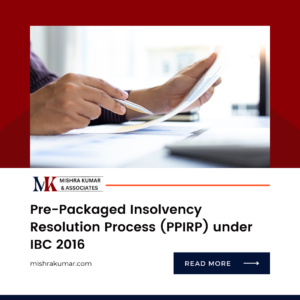Advising Management on Post-Restructuring Strategies
Corporate restructuring is a complex and strategic process aimed at improving a company’s financial health, operational efficiency, and overall competitiveness. However, the success of restructuring efforts largely depends on how the company adapts to the post-restructured scenario. In this blog, we will discuss the critical aspects of advising management on post-restructuring strategies to help companies navigate this crucial phase effectively.
INTRODUCTION
Corporate restructuring is a complex and strategic process aimed at improving a company’s financial health, operational efficiency, and overall competitiveness. However, the success of restructuring efforts largely depends on how the company adapts to the post-restructured scenario. In this blog, we will discuss the critical aspects of advising management on post-restructuring strategies to help companies navigate this crucial phase effectively.
ANALYSIS
1. Evaluate the Restructuring Results
The first step in advising management is to thoroughly evaluate the results of the restructuring. This involves assessing whether the intended objectives have been achieved, including financial goals, improved operational efficiency, or market expansion. Understanding the outcomes provides a foundation for future decision-making.
2. Realign Business Goals and Objectives
Post-restructuring, it’s essential to reassess and realign the company’s goals and objectives. The management team should determine new performance targets, growth strategies, and areas of focus based on the changes implemented during restructuring.
3. Strategic Planning and Implementation
Advisors must assist in creating a strategic plan that guides the company towards its post-restructured goals. This plan should encompass market positioning, resource allocation, product development, and growth strategies. The implementation phase is critical, and advisors should help ensure a smooth execution.
4. Monitor Key Performance Indicators (KPIs)
Effective monitoring of KPIs is vital in post-restructured scenarios. Advisors should work with management to establish and track key performance indicators that reflect the company’s performance and progress towards its goals. Regular reviews and adjustments may be necessary.
5. Talent and Workforce Management
Advisors should help management assess the workforce’s capabilities and requirements in the post-restructured scenario. This includes identifying skills gaps, addressing workforce morale and training needs, and possibly reorganizing the team to match the company’s new strategic direction.
6. Financial Management
Financial stability is crucial. Advisors should help management establish robust financial management practices, including budgeting, cash flow management, and cost control measures to ensure the company remains on a solid financial footing.
7. Market Analysis and Competitive Positioning
Market dynamics change over time. Advisors should provide guidance on how to conduct market analysis, evaluate competition, and adapt the company’s market positioning to stay ahead in the industry.
8. Customer and Stakeholder Relations
Maintaining positive relationships with customers and stakeholders is vital. Advisors can assist in developing strategies for retaining and growing the customer base and communicating with shareholders and other stakeholders effectively.
Challenges in Post-Restructuring Scenario
- Employee Morale: Employee morale may suffer during restructuring. Advisors can suggest strategies to boost employee morale and motivation.
- Market Uncertainty: Market conditions may remain uncertain post-restructuring. Advisors can help management devise strategies for dealing with market fluctuations.
- Managing Debt: If debt was a part of the restructuring, advisors can provide guidance on debt management and repayment strategies.
CONCLUSION
Advising management on the post-restructured scenario is a critical role in ensuring that the restructuring efforts are fruitful in the long run. It involves realigning objectives, setting new strategies, monitoring performance, and addressing challenges that may arise. Effective post-restructuring strategies can help a company not only recover but thrive in the ever-changing business landscape.
FAQs
Q1: How long does it take for post-restructuring strategies to yield results?
- The timeline for seeing results from post-restructuring strategies can vary widely depending on the specific changes made and the industry. It may take months to years.
Q2: What if the restructuring did not achieve the desired results?
- If the restructuring did not meet its objectives, it’s essential to assess what went wrong and consider adjustments to the strategies, possibly including further restructuring.
Q3: What role does communication play in post-restructuring scenarios?
- Effective communication is crucial for maintaining employee morale, reassuring stakeholders, and ensuring a smooth transition. Advisors often emphasize the importance of clear and transparent communication.
Q4: Are there specific industries where post-restructuring is more challenging?
- Post-restructuring challenges can vary by industry. Highly regulated industries or those with rapidly changing market conditions may face additional complexities in the post-restructured phase.
RECENT POSTS
- The implication of Stamp Duty on Scheme of Arrangement (Merger & Amalgamation):
- Pre-Packaged Insolvency Resolution Process (PPIRP) under IBC 2016
- BUY BACK OF SHARES V/S DIVIDEND
- Comprehensive comparative analysis of SEBI (Listing Obligations and Disclosure Requirements) (Second Amendment) Regulations, 2021.
- SEBI (Delisting of Equity Shares) Regulations, 2021-Imposes new responsibilities on the board of directors.

The implication of Stamp Duty on Scheme of Arrangement (Merger & Amalgamation):
The implication of Stamp Duty on Scheme of Arrangement (Merger & Amalgamation): The Scheme of Arrangement is a legal mechanism under corporate law that allows

Pre-Packaged Insolvency Resolution Process (PPIRP) under IBC 2016
Pre-Packaged Insolvency Resolution Process (PPIRP) under IBC 2016 The Insolvency and Bankruptcy Code (IBC) 2016, is a comprehensive legislation aimed at consolidating and amending laws

BUY BACK OF SHARES V/S DIVIDEND
BUY-BACK OF SHARES V/S DIVIDEND A dividend offers cash rewards to all shareholders in accordance with their stake in the company, whereas a share buyback

Comprehensive comparative analysis of SEBI (Listing Obligations and Disclosure Requirements) (Second Amendment) Regulations, 2021.
Comprehensive comparative analysis of SEBI (Listing Obligations and Disclosure Requirements) (Second Amendment) Regulations, 2021. Securities and Exchange Board of India (“SEBI”) vide notification dated May

SEBI (Delisting of Equity Shares) Regulations, 2021-Imposes new responsibilities on the board of directors.
SEBI (Delisting of Equity Shares) Regulations, 2021-Imposes new responsibilities on the board of directors. Securities and Exchange Board of India (“SEBI”) vide notification dated 10th

Summary of Insolvency and Bankruptcy Board of India (Liquidation Process) (Amendment) Regulations, 2024
Summary of Insolvency and Bankruptcy Board of India (Liquidation Process) (Amendment) Regulations, 2024 The Insolvency and Bankruptcy Board of India (IBBI) recently issued amendments to

